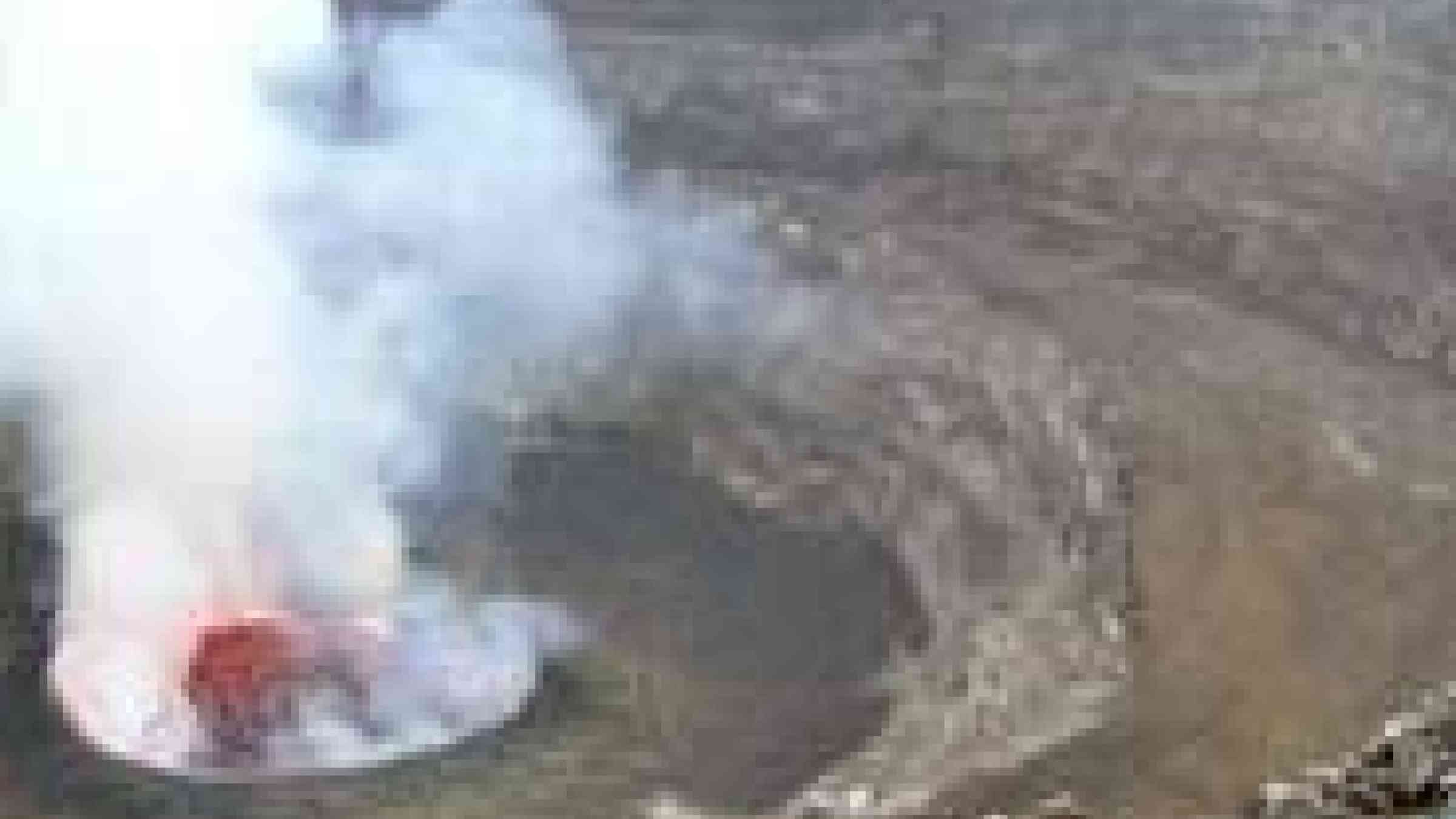
By Jonny Hogg
Kinshasha - Eleven years after an eruption of Mount Nyiragongo devastated the sprawling lakeside city of Goma, killing hundreds of people, eastern Congo's armed conflict is preventing scientists from predicting the volcano's next deadly explosion.
With its plume of ash and steam reaching high into the sky, the brooding Nyiragongo is one of the world's most active volcanoes and a constant menace to the city of 1 million people, whose streets are still scarred by solidified lava.
Attempts to monitor the volcano's activity have been dangerously curtailed by the M23 rebel group which has controlled its lush, forested slopes for the past year.
Observation equipment has been looted by armed groups and the area around Nyiragongo is off-limits as rebel fighters defend their strategic positions overlooking Goma.
"What happened in 2002 will happen again. We just don't know when," Celestin Kasereka Mahinda, a vulcanologist at the Goma observatory and head of a national committee charged with planning for natural disasters.
Kasereka and his colleagues gave two months' warning before the last eruption but authorities ignored them. People only began to evacuate as the first fingers of lava probed their way into the town's densely populated residential areas.
Goma's airport is still surrounded by lava blocs as big as cars, excavated after the runway was swallowed by molten rock.
Kasereka used to conduct weekly checks on Nyiragongo, one of only three volcanoes in the world to have a permanent lava lake.
"Surveillance is very reduced so the risk has become very big," he aid. "The situation is a bit ridiculous."
PREFER REBELS TO ERUPTION
Goma's residents are no strangers to danger, natural and manmade. The town sits above a subterranean lava bed 1 km (0.6 miles) deep in an area, known as the Albertine rift, that is one of the most volcanically active on earth.
Neighbouring Lake Kivu contains enormous quantities of methane and carbon dioxide. Experts say seismic activity could release that into the atmosphere, threatening millions of lives.
The makeshift camps which ring the city, home to tens of thousands of people displaced by fighting, testify to the nearly two decades of conflict between armed groups, the army and neighbouring countries which have ravaged the region.
Militia fighters regularly inflict massacres and mass rapes on the civilian population. Last year, rebels swept past U.N. peacekeepers and routed government troops to briefly seize Goma, and they once again menace the town's north flank.
"We'd prefer gunfire to another eruption," said Aminata Yahaya, 38. She barely escaped with her children last time the volcano exploded and returned three weeks later to find her home ravaged by fire and looted.
Speaking in one of Goma's ramshackle markets built on an old lava flow, where she sells dried fish, Yahaya said the last eruption had devastated the town.
"If there's another eruption, it'll hit the economy: we'll have to start from zero again. Our houses will be destroyed, our people killed," she said.
Joseph Makundi, civil protection co-ordinator for Goma, accepts that the security situation has increased the volcano's threat. Not least, he says, is the risk of lava exploding the stockpiles of ammunition which dot the heavily militarised town.
In the worst case scenario, authorities would have to evacuate around two-thirds of Goma's inhabitants, he says. Community networks and a flag system - green for safe, red for evacuation - have been put in place for that purpose.
Before the last eruption there were signs from communities around the volcano that something was amiss, Makundi says.
Villagers found their banana beer fermenting far more quickly because of raised ground temperatures and children left alone were asphyxiated by poisonous gases. Makundi says residents must be alert for these kinds of warnings.
"We must develop an evacuation mechanism without counting too much on the volcanic observatory," he says. "Our logistical capacity to put our plans in place is limited."
Observers say Nyiragongo is not immediately threatening. However, neighbouring Nyamuragira, 13 km (8 miles) to the northwest and reputedly Africa's most active volcano, is showing warning signs of a possible eruption.
The Volcano Hotel is an eerie reminder of the mountains' threat. The bottom half of the building has been cocooned in solidified lava, turning what was once the ground floor into the basement, with jagged rocks obscuring the light.
Cancild Sadiki Muhindi, the hotel's owner, spent more than a year excavating the lower floor to reclaim it from the lava. But she knows she may well lose it all and has little faith that Congo's government will be of much help.
"State, what state? The situation in this country is we don't have a state," she says with a shrug. "The volcano, it's a real problem for me, and my business." (Editing by Daniel Flynn and Giles Elgood)